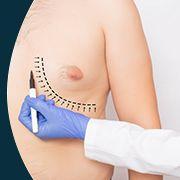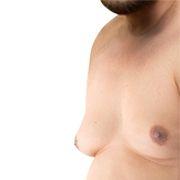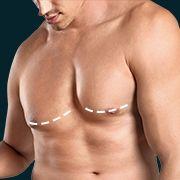Recovery Duration Following Lipoma Surgery: Key Information
In This Article
Recovery Duration Following Lipoma Surgery: Key Information
Prathibha
Updated on February 27, 2025
Medically verified by Dr. Arya
Fact checked by Dr. Fazeela

Cosmetic
4 min read
Are you wondering what to expect after undergoing lipoma removal surgery? You are in the right place! Mykare Health is here to provide a comprehensive guide on lipoma removal recovery to help you confidently navigate the post-surgery phase. In this blog, Kareline explores lipoma recovery time, post-operative care, and factors that influence healing. Whether you're preparing for an excision of lipoma or just curious about the lipoma surgical procedure, this guide covers all the essential details.
What is Lipoma?
A lipoma is a soft, fatty lump that grows slowly beneath the skin. It is typically non-cancerous and painless, but in some cases, it can cause discomfort. Lipomas in the body can appear anywhere but are most commonly found on the back, neck, shoulders, arms, and thighs.
Lipoma Removal Surgery
If a lipoma on the head or any other part of the body becomes painful, restricts movement, or grows significantly, surgical removal is recommended. The lipoma surgical procedure is a quick, outpatient treatment performed under local anesthesia.
-
Surgical Excision: The most common method involves making a small incision and removing the lipoma.
-
Liposuction: In some cases, liposuction can be used to remove fatty tissue with minimal scarring.
-
Laser Lipolysis: A less invasive procedure that helps dissolve the lipoma.
Lipoma Removal Recovery & Healing Process
Recovery from lipoma removal surgery depends on several factors, including the size of the lipoma, its location, and the patient's overall health.
Immediately After Surgery
-
Expect mild discomfort and swelling at the surgical site.
-
A waterproof dressing will be applied to protect the wound.
-
Your surgeon will provide aftercare instructions and pain management medications.
-
Avoid strenuous activities for at least a week to allow proper healing.
First Few Days Post-Surgery
-
Pain management: Over-the-counter painkillers or prescribed medications will help ease discomfort.
-
Avoid infection: Keeping the wound clean and dry is crucial to prevent lipoma infection.
-
No heavy lifting: Avoid activities that put strain on the affected area.
Two Weeks After Surgery
-
Most patients can resume normal activities.
-
Stitches, if used, are typically removed within 7-10 days.
-
Some bruising or minor swelling may still persist but should gradually subside.
-
Apply scar creams as advised by your doctor to minimize scarring.
One Month After Surgery
-
The wound should be fully healed.
-
You can resume exercise and other physical activities.
-
Any residual discomfort should be minimal.
-
Swimming and other water activities can typically be resumed after 4 weeks.
 9 min read
9 min readThe Advantages of Choosing Mykare Health for Gynecomastia Surgery
 6 min read
6 min readIdentifying The Ideal Age For Gynecomastia Surgery
 6 min read
6 min readPre and Post Gynecomastia Surgery: Essential Things to Know
Get a Callback Now
Lipoma Treatment Without Surgery
For patients looking for lipoma treatment without surgery, there are limited options, including
-
Lipoma treatment tablets: Some medications may be prescribed to manage symptoms, but they do not eliminate lipomas.
-
Lifestyle modifications: Maintaining a healthy diet and regular exercise may help prevent the growth of new lipomas.
-
Steroid injections: In some cases, steroids can shrink the lipoma but won’t completely remove it.
Before and After Lipoma Removal
Patients undergoing lipoma removal surgery often notice a significant difference in comfort and appearance. While small scars may be present, modern surgical techniques minimize scarring for better cosmetic results.
FAQs on Lipoma Surgery & Recovery
1. What is the best treatment for lipoma?
Surgical excision is the most effective method for removing lipomas completely. Other options, such as liposuction or steroid injections, may help in some cases.
2. Are multiple lipomas hereditary?
Yes, multiple lipomas can be hereditary, especially in conditions like familial multiple lipomatosis.
3. What treatment options are available for multiple lipomas?
-
Surgical removal: The most effective and permanent treatment.
-
Liposuction: A minimally invasive option.
-
Steroid injections: May reduce the size but do not remove the lipoma entirely.
4. Can multiple lipomas recur after removal?
While most lipomas do not return after surgical removal, new lipomas can develop over time, especially in individuals prone to lipoma formation.
5. How long does lipoma recovery time take?
The typical lipoma recovery time is about 2-3 weeks, with complete healing taking around a month.
6. Can lipoma turn into cancer?
Lipomas are benign tumors and do not turn into cancer. However, a rare condition called liposarcoma, a malignant tumor can mimic a lipoma.
7. How to prevent lipomas from forming?
There is no guaranteed way to prevent lipomas, but maintaining a healthy lifestyle and regular check-ups can help in early detection and management.
If you’re considering lipoma removal surgery, consult a specialist to determine the best approach for your condition. A professional evaluation ensures the right treatment for effective and safe removal. Book a consultation today with Mykare Health!
Lipoma removal recovery generally takes 2-3 weeks, depending on the size and location.
Post-surgery care is essential to prevent lipoma infection and ensure a smooth healing process.
Before and after lipoma removal, following the surgeon’s advice helps reduce scarring and ensures a quicker recovery.
Lipoma treatment without surgery includes steroid injections and lipoma treatment tablets, though these are less effective than surgery.
Lipomas are benign, but regular check-ups are recommended to monitor any unusual growths.
Source Links
What to expect after Lipoma Surgery - Prystn Care
Recovery after Lipoma Removal - Cheshire Cosmetic Surgery
Post-Surgery Recovery Guidelines - Medifin



